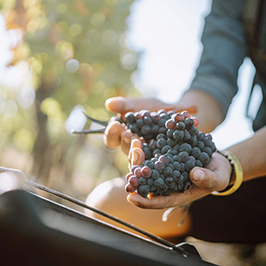Un grand vin de terroir signé Haute Vallée du Gassac.
– 39% Viognier (origine des bois: Georges Vernay – Condrieu).
– 30% Chardonnay.
– 25% Petit Manseng (origine des bois: Charles Hours – Béarn).
– 6% variétés rares : Marsanne, Roussanne, Muscat Petit grain (France).
L’année 1992 a connu un mois de septembre très sec à Daumas Gassac ; les pluies diluviennes de l’automne 1992, en Aquitaine et Bas Languedoc, ont épargné la région d’Aniane d’où un vin de belle concentration.
Macération pelliculaire pendant 5 à 7 jours, fermentation en cuve inox.
Le temps était remarquable avec d’énormes différences le jour et la nuit. Nous avons eu 7°C le matin du 30 septembre, alors que la plupart des jours ont atteint 30°C, avec des pics de 35°C.

Les deux vies des vins blancs Mas de Daumas Gassac
Dans une cave fraîche (14-16°C) et humide, tous peuvent attendre de nombreuses années sans crainte, même les plus anciens.
Par contre, une cave trop chaude accélèrera le processus de vieillissement des vins.
Première vie
Fraîcheur et fruité des premières années. À déguster dans les trois premières années si vous appréciez les merveilleuses saveurs fruitées. Vous pouvez boire nos blancs, aussi bien à l’apéritif, que pendant le repas, accompagnant presque tous les plats.
Deuxième vie
Un vin différent apparaît entre la troisième et la sixième année ! Le fruit s’efface, évoluant vers des saveurs de “Jerez” et de vieux “Sauternes”, des
saveurs “oxydatives” d’une grande finesse.
Si vous ne cherchez pas ces notes paradoxales, surprenantes mais savoureuses, nous vous conseillons de déguster le Mas de Daumas Gassac Blanc dans les deux premières années.

* INSCRIVEZ-VOUS AUX VENDANGES 2025 *
Nous recherchons actuellement des personnes motivées qui seraient heureuses de nous rejoindre pour vivre l’expérience des vendanges au Mas !